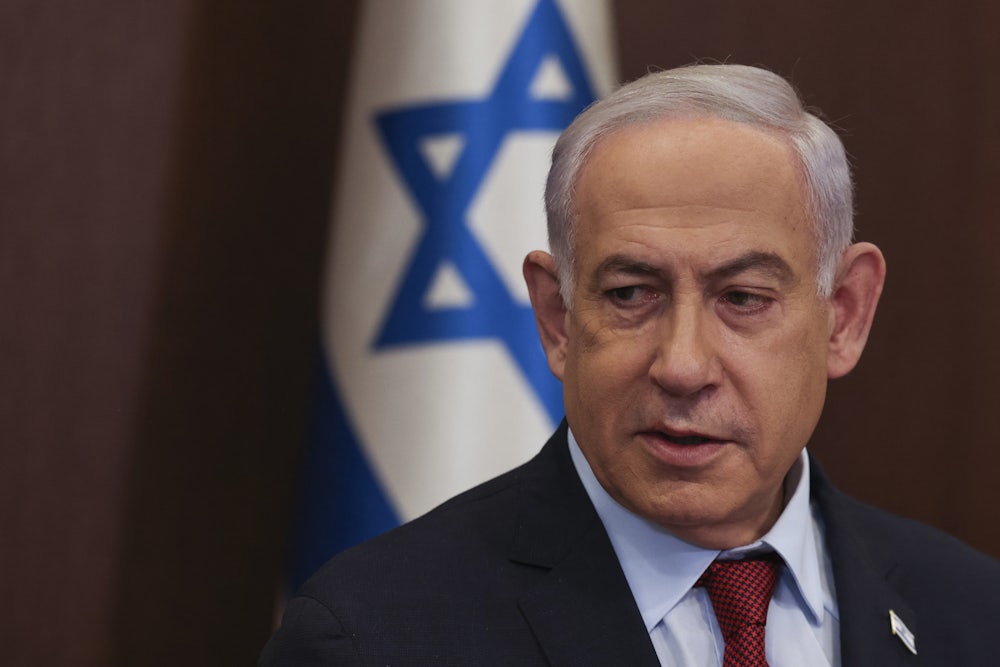As the war on Gaza reaches its third month without Israel accomplishing its publicly stated goals, the discussion has begun to shift to finding an acceptable formula for what happens when the war ends.
Israel’s two publicly stated goals were crushing Hamas and securing the safe return of the hostages. Clearly, Hamas has not been defeated as Israelis in Tel Aviv and other cities trying to celebrate New Year’s Eve were hit with a barrage of Hamas rockets at the stroke of midnight, some coming from northern Gaza, an area that the Israeli army has repeatedly claimed it controls. (The Iron Dome intercepted most of the missiles, and there were no casualties.)
The other goal was partially accomplished but only as part of several prisoner exchanges with Hamas. Israeli civilians were exchanged with Palestinian women and youth in Israeli prisons, most of them held administratively without charges or trial under Israeli laws that date back to British Mandate regulations in 1945. Hamas agreed to release the civilian prisoners at a ratio of one Israeli to three Palestinians.
However, the exchanges have stopped as Hamas, negotiating through Egypt and Qatar mediators, seeks a full cease-fire and an end to the Israeli occupation of Gaza. Hamas is suggesting a formula of all versus all, meaning all Israelis held by Hamas (including civilians, soldiers, officers, and bodies of Israelis) in return for all Palestinians held by Israel, including the more than 4,600 detained without trial since October 7 and the bodies of Palestinians that the Israelis have been holding for some time. The Hamas offer is conditional on an overall deal that includes a full-fledged cease-fire and an end to the occupation because Hamas is concerned that once Israel gets its civilians and soldiers, it will move even more brutally against Gaza in an attempt to accomplish its first goal.
This is where things stand today because there is a big question mark as to what happens the day after Israel withdraws from Gaza. The problem is that there is a big gap between what is logical and possible and has international support and what Israel wants. The Netanyahu government does not want any solution that includes a role for the West Bank Palestinian leadership, nor does it agree to a solution where Gaza and the West Bank are ruled by any party. On the other hand, no Arab government is willing to bypass the government headed by Palestinian President Mahmoud Abbas, nor will any international body be willing to govern Gaza without the consent of the only party that has executive and security power in Gaza, namely Hamas and other militant groups.
The United States and other international officials have floated the name of former Palestinian Prime Minister Salam Fayyad as a possible compromise solution. But Fayyad, currently a professor at Princeton University, told me that he has nothing to do with the ongoing discussions. Fayyad said that he insists on what he has said publicly, namely that the day-after solution in Gaza must not be an isolated solution outside the legitimate, internationally recognized leadership of the Palestinian Liberation Organization. He also believes that the PLO must be expanded to include representatives of Hamas and Islamic Jihad. He told me that anyone governing Gaza needs to have the widest consensus of the various political/military powers of the Palestinian people. He knows that this idea might be anathema to Israel and maybe the U.S., but he is confident that they will come around to accept it because everyone wants the day-after solution to be represented by a broad leadership, and this requires a consensus of the powers on the ground.
While these discussions have been going on behind the scenes in the Egyptian and Qatari capitals, Israel threw a monkey wrench in the discussions by a targeted assassination of senior Hamas leaders who were visiting the Hezbollah movement in Beirut. The January 2 drone attack that killed Hamas’s number two man, Saleh Al Arouri, and four other Hamas leaders caused a suspension by Hamas of all negotiations. Palestinians in the West Bank declared a one-day business strike on January 3 to protest the killing of Al Arouri, who is originally from the West Bank.
Not only did the Al Arouri assassination put a temporary end to the talks, but it is also bound to cause a delay in some of the behind-the-scenes attempts to reach some type of understanding between the PLO’s dominant group, Fatah, and Hamas. Jibril Rajoub, the secretary of Fatah, was authorized by Abbas to negotiate with Hamas on a deal that would allow Hamas to join the PLO. The lead person from Hamas who was holding the talks was the now-assassinated Al Arouri. Rajoub and Al Arouri were former prison friends and had established a good relationship that included both making positive public statements about each other.
What has made this Hamas-Fatah rapprochement possible was the decision by Hamas to accept a long-standing condition that Abbas had demanded of them—that they accept all relevant international covenants. Hamas official Mousa Abu Marzouk suggested in mid-December that Hamas could adhere to the PLO’s position on Israel, which includes recognition of Israel. This acceptance was meant to legitimize the movement within international bodies and will indirectly include the recognition of Israel. The PLO and Israel had recognized each other on the eve of the signing of the Declaration of Principles at the White House on September 13, 1993.
Top Hamas officials have publicly stated that they accept all relevant international covenants and resolutions, thus opening up discussion that Hamas is willing to recognize Israel. It might be argued that such statements have been made under the duress of the war on Gaza, but the point is that by meeting the conditions set by the international community, Hamas wants to be seen as a legitimate political movement and not a militant or terrorist organization.
The day after the end of the war is therefore complicated on many fronts. On the one hand, Hamas still holds Israeli civilians, soldiers, and senior officers, and at the same time, the Israeli army is suffering daily losses of its soldiers and equipment. International pressure and bad publicity are also on the rise, and the warm fuzzy days between President Biden and Netanyahu are quickly turning into a cold peace between the two allies.
The next weeks and months will be sensitive, to say the least. Each side wants to end this war as a victor or at least not as the defeated. Yet the civilian toll of Palestinians and the anguish of those held by Hamas and Israel are all subject to the tough negotiations that aim at finding a common ground that could bring the region out of this unprecedented civilian and military carnage. While the pressure is mounting on both Netanyahu and Hamas, the only source of a breakthrough will come when leaders prioritize the common good for their people over personal or political interests.
The internal fighting in Israel is the most obvious sign of the need to end the war, as are the mounting casualties among soldiers and officers, as well as the voices of the hostages’ families that are getting louder and louder. Israel under Netanyahu will try to drag things out as much as possible in order to be able to come out of this with any face-saving formula. Unable to reach any senior Hamas leaders, the Israelis have chosen the more political leaders abroad. This will do little to change the future status of Netanyahu or the overall outcome of this brutal war that has so reduced Israel’s standing.








